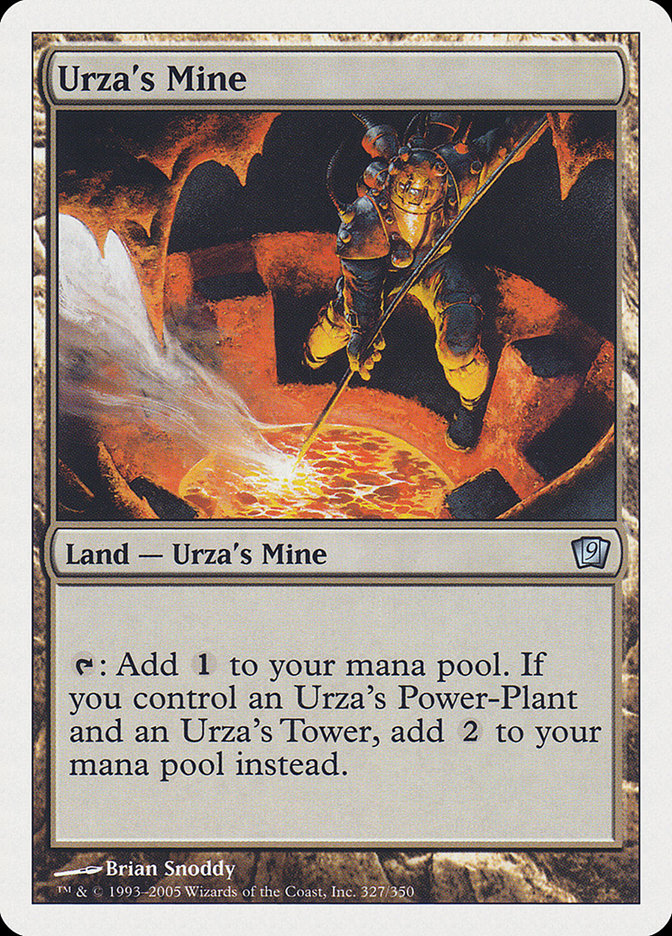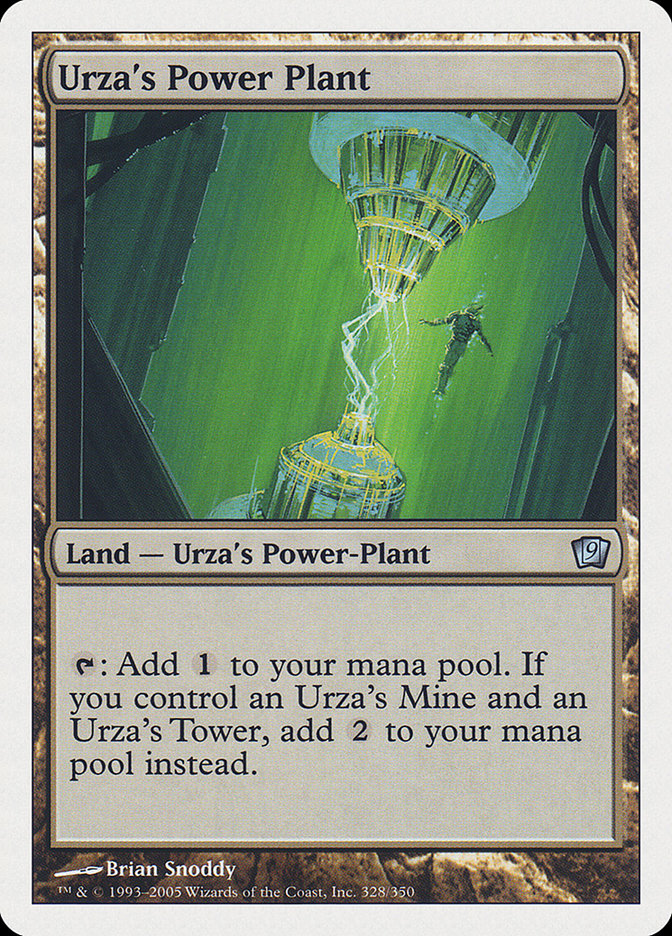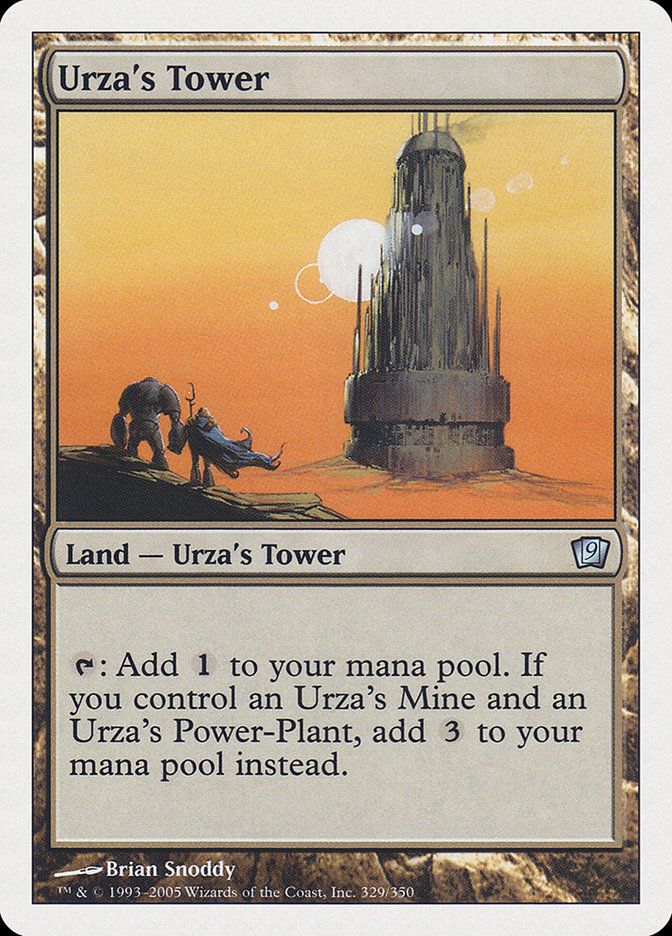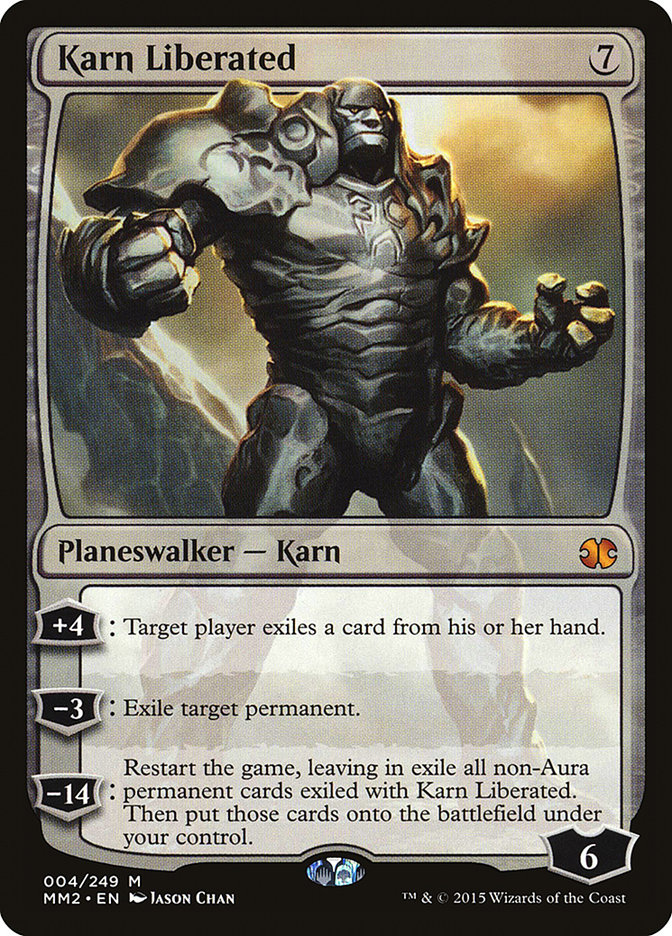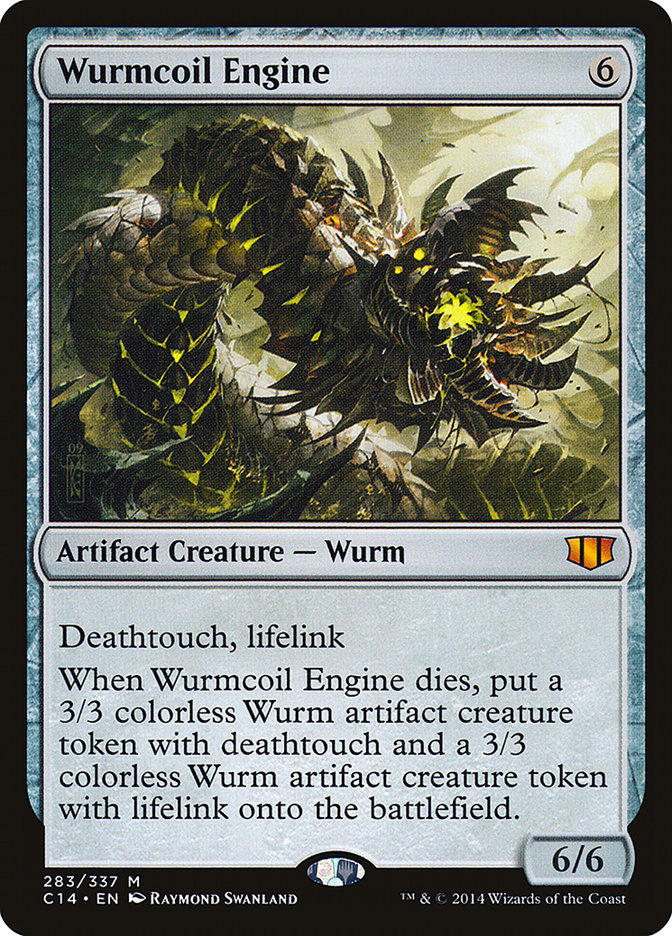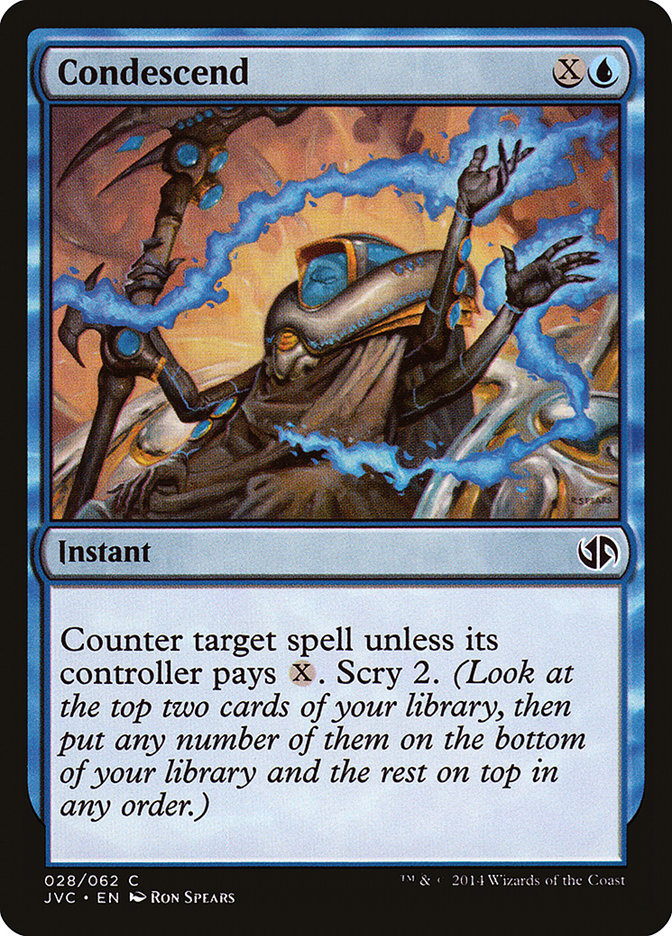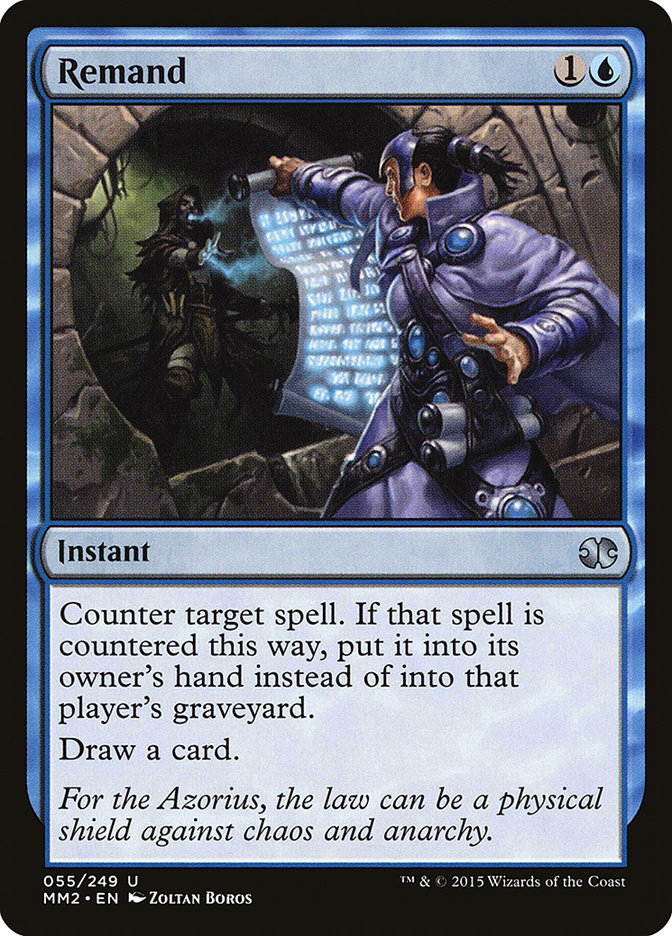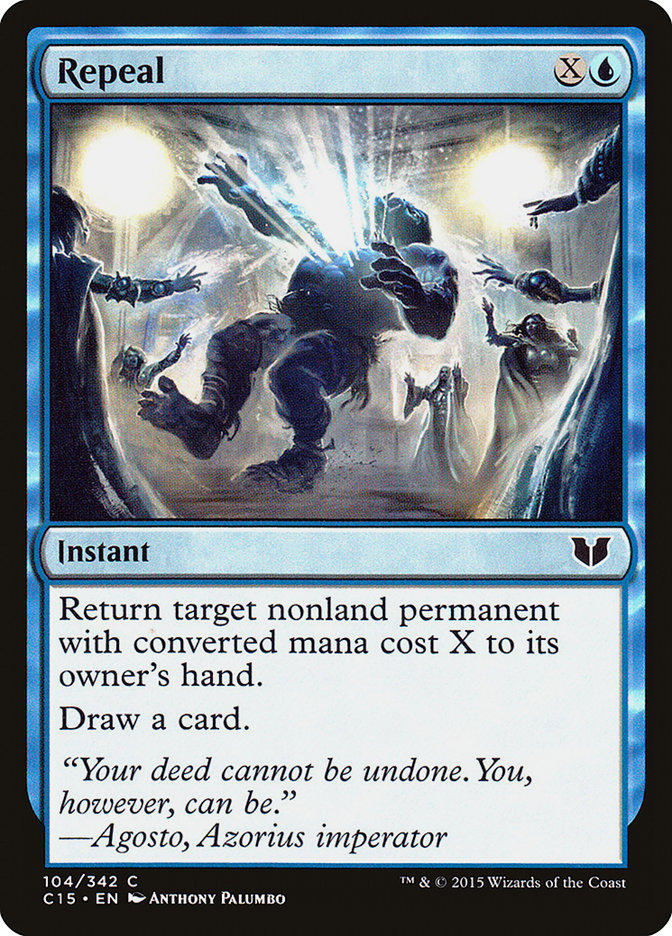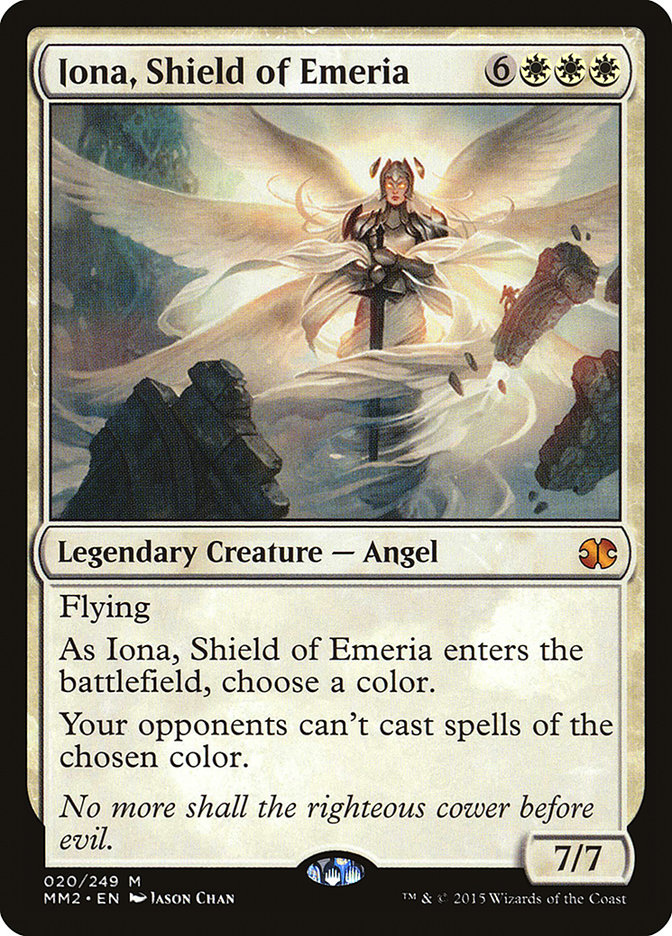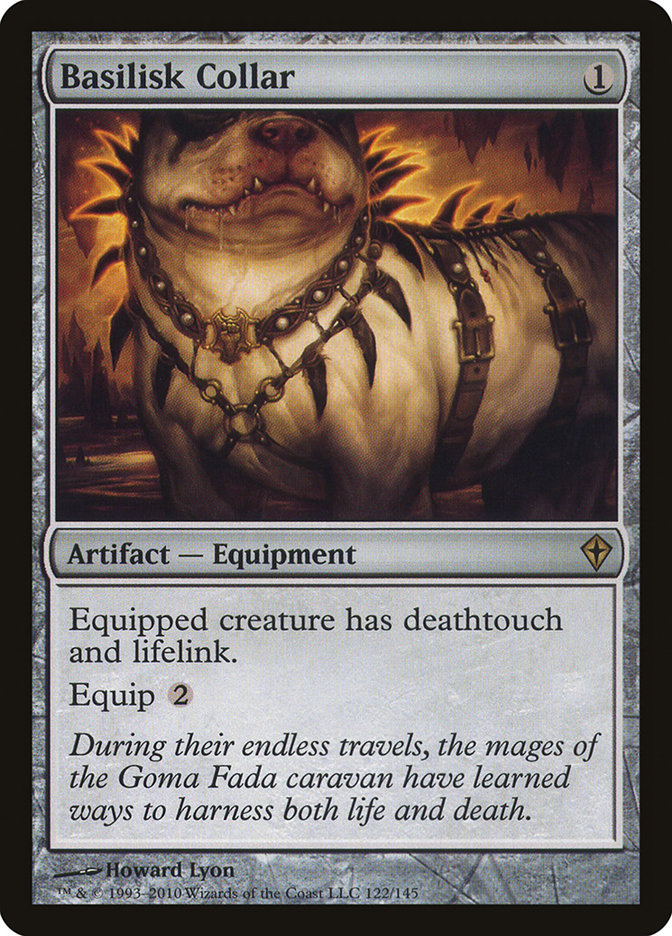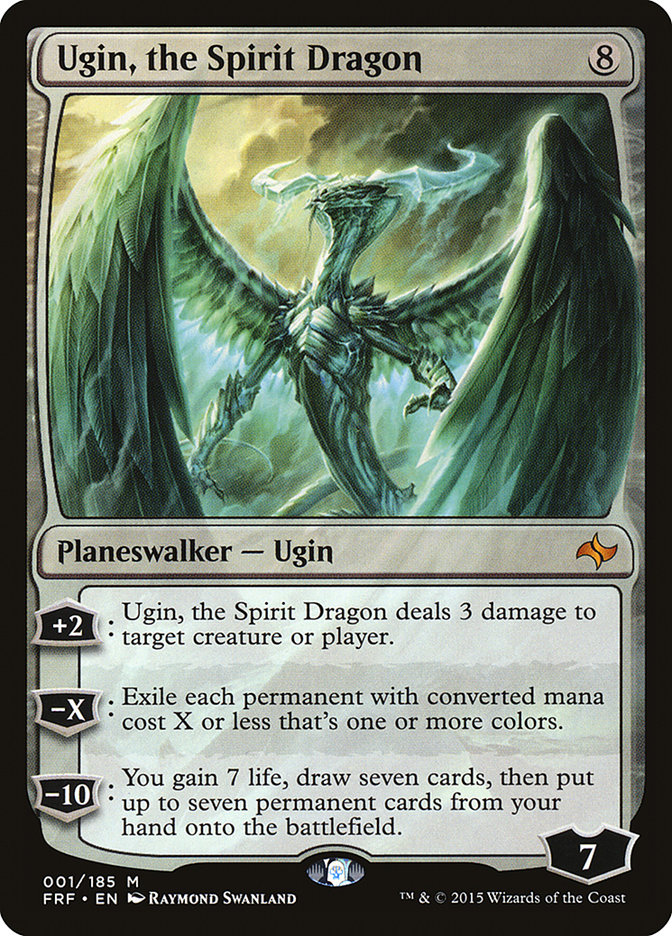Tron is ever-present in the metagame of Modern, often fluctuating in popularity and power level, but lately there have been some new variants seeing play. Traditionally Tron is a G/R deck using green land tutors and large colorless threats to close out the game, but just a week ago Tom Ross won the SCG Open in Columbus while playing G/W Tron.
While looking through other decks that have been doing well lately, I noticed a strange pattern of non-traditional Tron decks performing well. It has been adapting to the new metagame by trying out new strategies and using different colors.
What Makes a Deck Tron?
Tron is a classic deck that has changed very slowly over a long period of time. It uses a large number of non-interchangeable pieces that are required for a basic Tron strategy.
The most obvious requirement to being a Tron deck is to run the Urzatron lands: Urza’s Tower, Urza’s Mine, and Urza’s Power Plant. The basic strategy of the deck is to ramp into large amounts of mana and play large threats ahead of curve. It plays much like a combo deck while trying to assemble all three lands, using Expedition Map to try to find them more reliably. Some variants are more concerned with achieving Urzatron earlier in the game than others.
In general Tron decks are not overly concerned about card advantage or tempo. It is happy to play a seven- or eight-mana battlefield wipe even if it is not trading for a larger amount of mana. It is able to make such a large amount of mana that mana becomes a much more expendable resource than in other decks. Tron also tends to be the strongest top-decking deck in Modern. Everything they play is very large and powerful and will likely be way ahead of curve because they have so much more mana than you.
Tron has some very good matchups, most notably against Jund. Jund generally wants to play into the late-game but struggles to deal with threats the size that Tron can produce. Tron often is able to go much bigger than midrange or control decks and tends to do well in those matchups.
Very aggressive decks are harder for Tron to win against unless they draw their early removal or battlefield wipes. If they are able to assemble Tron on turn 3, then it is very difficult to stop them, but even one turn late and aggressive decks tend to run right over Tron.
Other weaknesses that Tron can struggle with are the inconsistencies of any ramp deck. There are two halves to the deck, the ramp half and the big-threat half. Sometimes you will just draw all of one or all of the other and will lose to your own deck. Land destruction can be very challenging for Tron to beat as well, especially the new Crumble to Dust, which exiles a land and all other cards with the same name throughout the entire deck. The versions that are less concerned about assembling Urzatron tend to be less affected by cards like these.
Three Categories
In general I have found that all of these versions of Tron fall into three broad categories: Green, Blue, or Colorless. Each has the core of the Tron deck, but they vary wildly in their strategy in achieving the late-game. Green focuses more on ramp, blue on controlling the early-game with countermagic, and colorless on attacking early and ending the game with big finishers.
Green Tron
Green Tron is the most common type of Tron deck you will see. It focuses on achieving Urzatron as early as possible and utilizes land tutors like Ancient Stirrings and Sylvan Scrying to do so. Most of the green cards played in these variants of Tron are early cards focused on ramping, but World Breaker has made a huge difference in the various Green Tron decks and is probably a new staple that will always be included in Green Tron.
Creatures (8)
Planeswalkers (6)
Lands (19)
Spells (27)
- 4 Lightning Bolt
- 3 Oblivion Stone
- 4 Sylvan Scrying
- 4 Chromatic Sphere
- 4 Chromatic Star
- 4 Expedition Map
- 4 Ancient Stirrings
Sideboard

This is the classic version of Tron. It runs all of the expected cards with the common suite of four Karn Liberated and two each of the other top-end threats. It uses red for removal with Lightning Bolt in the maindeck and options of Ancient Grudge, Firespout, and Crumble to Dust in the sideboard.
Creatures (7)
Planeswalkers (6)
Lands (19)
Spells (28)
- 3 Oblivion Stone
- 4 Sylvan Scrying
- 4 Chromatic Sphere
- 4 Chromatic Star
- 2 Relic of Progenitus
- 3 Path to Exile
- 4 Expedition Map
- 4 Ancient Stirrings
Sideboard

This list won an Open just over a week ago; it eschews red for white. In general this is probably not the best option, but when expecting lots of Dredge in the metagame, white is much better-positioned than Red. Path to Exile replaces Lightning Bolt in the maindeck, and gaining access to Rest in Peace and Blessed Alliance in the sideboard makes Dredge much easier to defeat. It is otherwise pretty standard and follows the G/R list pretty closely.
Creatures (6)
Planeswalkers (6)
Lands (19)
Spells (29)
- 3 Oblivion Stone
- 4 Sylvan Scrying
- 4 Chromatic Sphere
- 4 Chromatic Star
- 2 Relic of Progenitus
- 4 Expedition Map
- 4 Ancient Stirrings
- 4 Collective Brutality
Sideboard

This version is very similar to the other Green Tron lists, but instead of using red or white, Twibs chose to play black. The main deck card choice was Collective Brutality, which I find very interesting. It costs two mana in the slot where Lightning Bolt and Path to Exile have been in the other decks but offers much more flexibility each time it is cast. You can choose to disrupt your opponent’s hand, kill a small creature, and/or drain your opponent for two life each time you cast it.
Collective Brutality will kill many Infect creatures and will be able to take a pump or protection spell from their hand, so it can often be a two-for-one in the matchup. Its answer to Dredge is a copy of Bojuka Bog in the sideboard, which can be tutored up with any of the twelve land tutors in the deck. This is a fine sideboard option for the matchup but may not be enough to stop Dredge moving forward. This list was successful, but I’m not sure how much Collective Brutality or Bojuka Bog helped in the games that were played.
Blue Tron
Blue Tron looks at the metagame very differently, and despite sharing many of the same cards and strategies as Green Tron, they couldn’t be much more different. Blue focuses more on control elements like counterspells to slow down the opponent until they can assemble Urzatron in the mid- or late-game.
Common counterspells are Condescend, Remand, and Repeal. The X-costed counterspells work very well when you are able to make significantly more mana than your opponent. There is plenty of card draw available with Thirst for Knowledge, and Blue Tron gains access to other win conditions and exploits them well.
Creatures (6)
Planeswalkers (1)
Lands (24)
Spells (29)

Mono-Blue Tron has two primary win conditions. The first is more traditional with large colorless creatures and playing an aggressive plan in the late-game, but the other is unique to Mono-Blue Tron. Once you have access to twelve mana (one of which is blue), an Academy Ruins, and a Mindslaver, you have an infinite combo that will let you play your opponent’s turns for the rest of the game. Once you are in a Mindslaver lock, is it very hard to stop them from taking every turn and eventually killing you with a Platinum Angel or Thought-Knot Seer.
Creatures (8)
- 1 Sundering Titan
- 1 Iona, Shield of Emeria
- 4 Wall of Omens
- 1 Elesh Norn, Grand Cenobite
- 1 Snapcaster Mage
Planeswalkers (2)
Lands (24)
Spells (26)

U/W Gifts Tron is quite different from even the Mono Blue Tron deck. It runs counterspells and battlefield wipes like most control decks, but instead of ramping into giant colorless creatures, instead it will cast Gifts Ungiven. One they cast it, they will tutor up Elesh Norn, Grand Cenobite and Iona, Shield of Emeria, as well as whatever cards they need to control the battlefield. They lock you out of the game and kill you with Elesh Norn or Iona in the late-game.
This deck is probably better-positioned in the current metagame compared to Mono-Blue Tron because it has access to more early-game removal. Path to Exile is very important for this deck to stop fast aggressive decks from killing them before they can get their powerful cards. Wall of Omens is also a wonderful cantripping blocker in the early-game that can help the deck stabilize.
Colorless Eldrazi Tron
Creatures (20)
- 2 Spellskite
- 2 Ulamog, the Ceaseless Hunger
- 4 Endbringer
- 4 Reality Smasher
- 4 Thought-Knot Seer
- 4 Matter Reshaper
Planeswalkers (1)
Lands (24)
Spells (15)

This Colorless Eldrazi Tron deck caught my eye because it was very different from traditional Tron. It still makes use of Urzatron to power out big spells, but instead of focusing on ramping as efficiently as possible, it plays Eldrazi Temple and other utility colorless lands to play a more rounded curve of creatures. It will start with a Matter Reshaper as early as turn 2 and continue to curve into threats ahead of schedule to get a solid head start.
This deck is very similar to the Colorless Eldrazi deck from Pro Tour Oath of the Gatewatch because it just tries to play all of the powerful Eldrazi creatures, including Matter Reshaper, Thought-Knot Seer, Reality Smasher, and Endbringer. It also runs four maindeck Chalice of the Void to lock more aggressive opponents down until Colorless Eldrazi Tron can finish the game. In place of Eye of Ugin, Tron lands amass large amounts of mana in the late-game.
One other interesting card is Basilisk Collar. This can act as removal of any creature when blocking and also makes the matchup very difficult for Burn. The lifegain stacked onto a turn 3 Thought-Knot Seer will get out of hand very quickly. Basilisk Collar can win games that otherwise would be very difficult for the Eldrazi Tron deck to win.
In Conclusion
One interesting thing that I noticed was that all of the decks were running at least one Ugin, the Spirit Dragon. He is a finisher and a battlefield wipe in one card that is quite affordable when you can easily make eight mana on turn 4.
Whatever your flavor of Tron, there are merits in all of them. Take the time to think about which might be best for your metagame and how to take advantage of choosing the right deck for a given tournament. Have a wonderful week, and as always, happy gaming!


